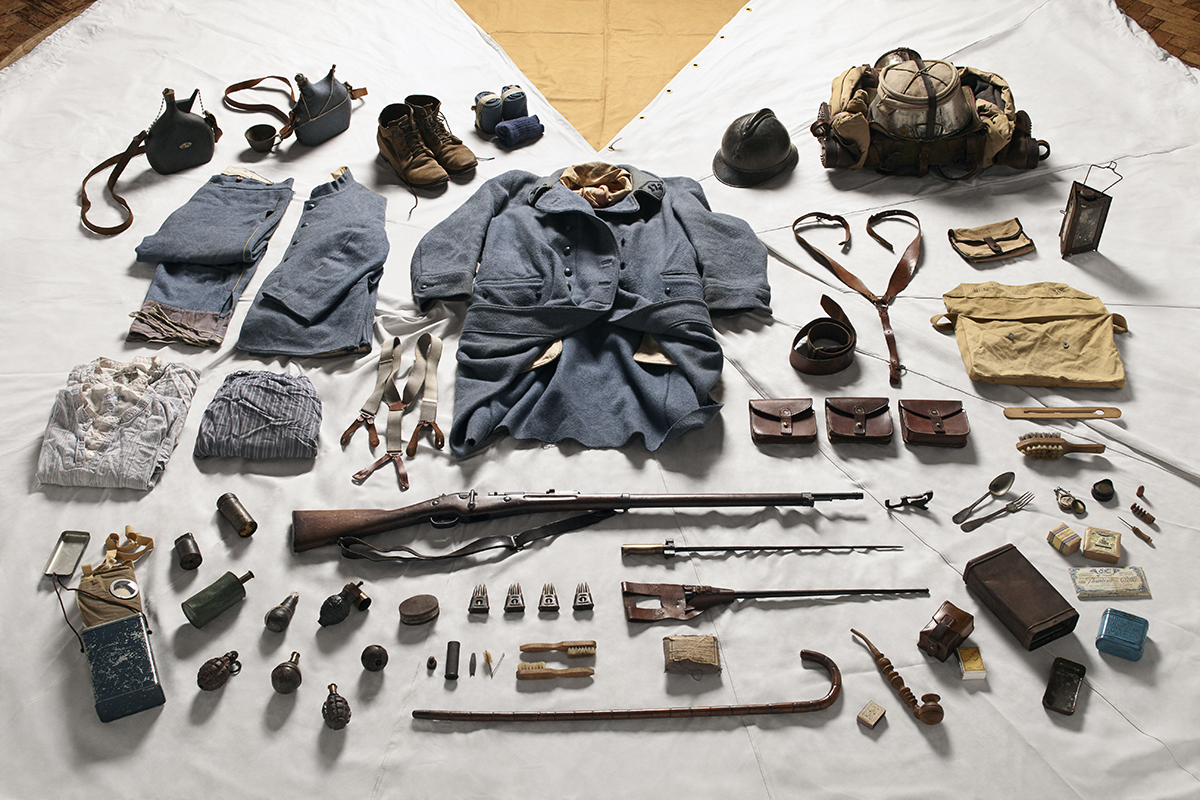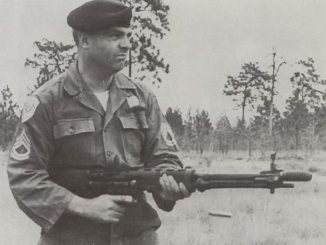Made by Carl Gebert, a master gunsmith in Munich, this custom sporting rifle exhibits all the fancy options available in the 1870s or 1880s! The base action is an 1871 Mauser, which was a single shot rifle. However, this specially made one had been modified to us a fixed box magazine holding 3 or 4 cartridges – and also have a magazine cutoff to allow easy single loading while retaining the loaded magazine. It is chambered for a .50 caliber round (although I’m not sure which one exactly), and also has a pair of double set triggers and a receiver tang sight in addition to barrel-mounted express sights. Clearly a rifle for someone who wanted the best that could be had!




Why does it appear to have a ramrod? Is it a cleaning tool, or some sort of inline muzzle loader variation: Cartridge= Charge of an unrelated caliber, bullet much larger.
Swivel action percussion/flintlocks might make good inline designs, on a separate note.
Two barrels like, rotate one per shot to align it with the striker.
It looks like a ramrod; trumpet type end.
https://en.m.wikipedia.org/wiki/Mauser_Model_1871
Says there was a mag version on that link. M80/07C(Serbia)
11.15mm is not so far off .50 is it rifled? Maybe it’s a shotgun, or paradox idea.
Looking at the 11mm case you’d probably have to shorten it to fit a 12.7mm bullet.
It’s like 5.77.450 type design fatter at the rear type thing.
“Looking at the 11mm case you’d probably have to shorten it to fit a 12.7mm bullet.”
According to http://www.municion.org/11_15x60R/11_15x60R.htm
bullet diameter of 11,15×60 R Mauser cartridge was 11,32 mm.
After some computation it seems that mating this case with 12,5 mm [approx. value] bullet it would give straight-walled cartridge.
Also notice that unlike some other cartridge of this era base of 11,15×60 R Mauser cartridge is not flat, but rather truncated cone (see drawing). I heard this form was used to suit extractor in Mauser Modell 71, but I don’t know if it is true or not.
it’s probably that round you identified.
Mauser-Koka-Đurić a conversion to 7 mmm magazine fed rifle of old model 1880.
https://en.m.wikipedia.org/wiki/Mauser-Koka
The cartridge could be a blank essentially.
I like it, maybe it was a development for establishing German east Africa. Larger bore, like.
Nice comment curve there, by me. I think.
Plausible- Most african guns at this time had more punch.
Splat, rather than spitzer. Provenance – Better in deepest darkest 19th c Africa than Munich $$$
“Splat, rather than spitzer.”
Spitzer bullet were invented in late 19th century (balle “D” for 8x50R Lebel was adopted in 1898). There were NOT Spitzer bullet available in 1870s or 1880s.
Intention, my dear Watson.
The receiver tang sight seems to be in danger of bolt strike when the bolt is yanked open. I could be wrong.
Your going against my wavelength, fundamentally opposing the forces of science. I hope your ashamed.
Ashamed.
Admit it, in a wave continuing format and we can move on.
This activity is voluntary obviously, etc.
Think about it, Cow… Water buffalo = African cow… Bang. Why they shot moo cows for testing, in Germany during the 19th c you’ll have to ask a German.
That’s why they didn’t have an empire, of note, the best way to do it is throw a stick of dynamite at who ever your talking to man or beast.
“they didn’t have an empire, of note”
Though Germany was working toward securing over-seas clay.
See Westafrika-Konferenz held in Berlin 1884-85
https://en.wikipedia.org/wiki/Berlin_Conference
result was formalization of European colonizing of Africa.
Aye alright mate, do Russians speak backwards or something it wasn’t a challenge just a comment.
“Might be handy to find our, in relation to international diplomacy”
Our = Out. Mistake.
Your giant army would be decimated, you know that don’t you.
That isn’t a claim of any sort of potential victory.
“It is chambered for a .50 caliber round (although I’m not sure which one exactly)”
Possibly that one: http://www.municion.org/12_7/12_7x60R.htm
If I understand correctly, it was designed in 1880 (so if my guess is good, that mean this rifle was produced not earlier than 1880) and was very popular in Germany.
Danish Remington falling block cal.
Spoilsport.
Hippopotamus, “MOO!” etc… Here catch, strike,sizzle fssssh. KABOOM!!!
Now sell us your rugs.
Hippopotamus, GROWL, then proceeds to beat you tartare with feet.
Historically, hippos killed more people than lions did. Jeff Cooper once observed;
“I believe the hippopotamus should replace the leopard as part of the African Big Five. For although the spotted cat is undeniably fast and scratchy, the water horse is an ill-tempered brute with muscle to match. If you ever find yourself becoming a bit jaded with life, contrive to position yourself between a hippo and the water along about sunrise. You’ll soon have all the excitement you can handle, and then some.”
One of my uncles who went on safari and helped bring down a hippo that wandered into their camp one night agreed with Col. Cooper wholeheartedly. Considering it took two rounds from his .375, one from another hunter’s .416, and finally a round from the guide’s .425 to finally convince the bugger to lie down and stop trying to tap-dance on everybody. All in the boiler room, BTW.
cheers
eon
Ak47 poachers, B’BBBBBBBBBB,ANG!!! But I agree, generally.
Not surviving though is it, even with a rickety rusty Romanian Akm. It’s proper dead, totally had it.
Nothing could take that, it’s just with people they tend to miss. Elephants, Hippos, etc, get the lot.
Unsustainable they just cut out.
Switch off.
Hippos still kill more people in Africa than any other large animal. They are very angry if they feel in any way threatened or think that their young are in danger. The second biggest killer is these days is, I believe, the Nile crocodile. Lions have dropped from the charts completely due to declined population.
I’ve seen one in Kenya. But I knew it was fecked with an Ak.
Express ammunition was all the rage even before smokeless powder. How many rounds did one need to expend on a rabid lion? Hopefully just one.
“before smokeless powder”
According to http://www.shakariconnection.com/giant-bores.html [in Africa for hunting usage]
four bore was standardised as suitable for elephant, while 8 bore was suitable for all the other big game.
It terms of bullet diameter 8 bore man .835″, due to limitations of black powder bigger calibers were required for same effect than in case of nitro powder.
Fair point, why does it have a ramrod then, possibly.
In “hot and high” conditions, the burning characteristics of both black powder and smokelees powders (especially early types of the latter) can change dramatically, often resulting in higher pressures at firing. When that happened, the ramrod was needed to persuade the resulting stuck case to vacate the chamber.
Of course, too much verve in using it could cause a case-head separation, deadlining the rifle unless you had a case extractor handy. And yes, most sensible African hunters had one to fit their rifle in their pocket, right next to the little brass oil bottle.
cheers
eon
Well said, wink.
The upper flat of the barrel, that has the makers name on it, appears to be widened, almost like the dovetail for a scope on a .22. Does anyone know why this is?
Probably for mounting an express sight setup;
http://www.jeffsoutfitters.com/Images/Photos//SIT001.jpg
Each folding V-notch is for a different range, usually 50, 100, 150, and 200 (yards on British rifles, meters on Continental examples).
While normally mounted on a transverse dovetail like a single v-notch, sometimes they were made to mount on a longer, linear dovetail, ax with this example;
http://www.e-sarcoinc.com/images/products/detail/msr221b.jpg
In either case, they were generally sweated or silver-soldered in place after adjustment for windage, to make sure they stayed put even under recoil.
At least some African type rifles solved the windage adjustment problem by putting that adjustment on the front sight, as with LMGs from WW2 on.
cheers
eon
Curious was the bottom of the bolt modified to feed the cartrige or was a whole new bolt fabricated